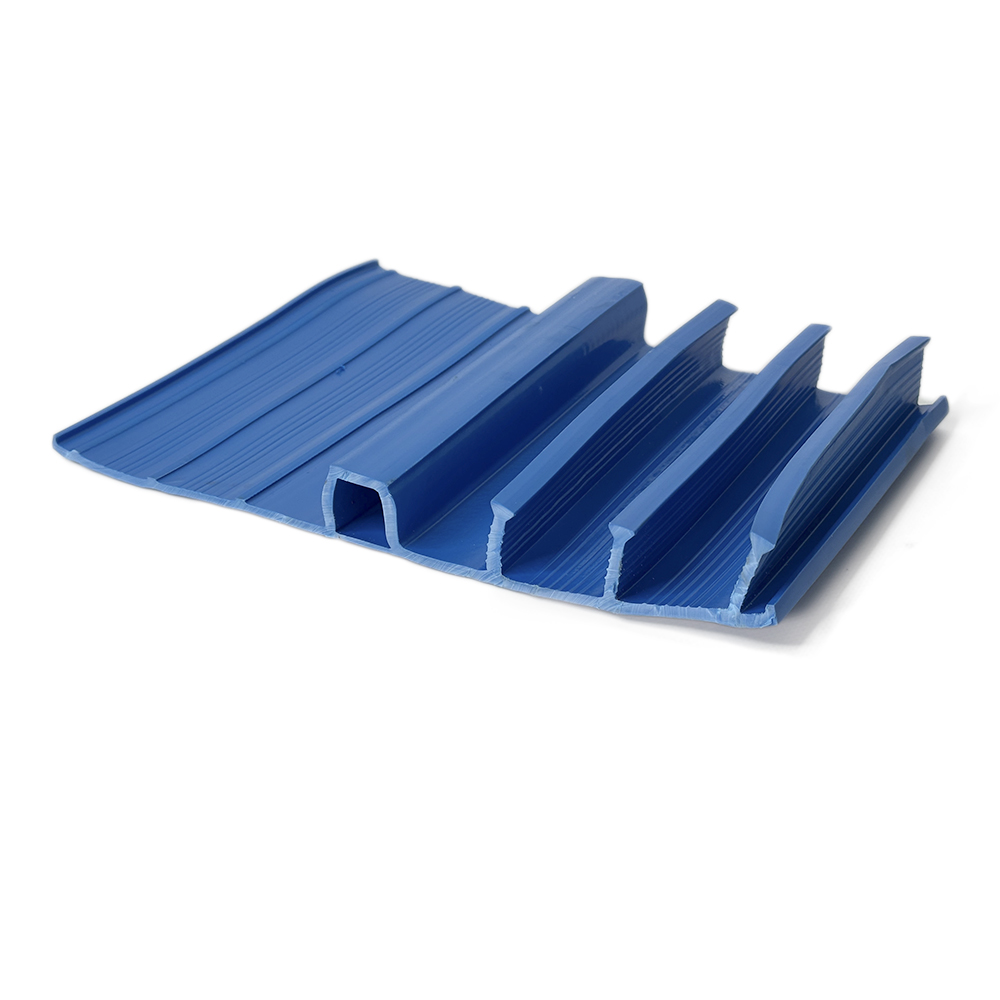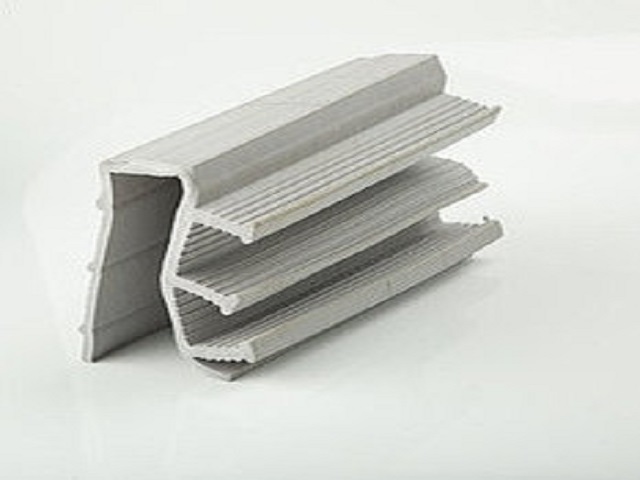Internal hydraulic gasket for expansion joints VD 320, PVC, 20 m bay, blue
Product code: 0070
Internal hydraulic joint for expansion joints
637 uah
The VD 320 hydraulic gasket is used for sealing and waterproofing movable joints in monolithic construction of buildings, including foundations, underground parking lots, tunnels, canals, etc. It is mounted directly on a formwork sheet. It is used in hydraulic structures - reservoirs, canals, dams, pools, etc., as well as for waterproofing joints of foundations, foundations, tunnels, multi-level parking lots and other underground structures. They are made of plasticized PVC-p polyvinyl chloride.
- allows reliable embedding into a concrete structure
- the presence of ribs on the locking plane prevents the penetration of moisture into the structure
- the presence of a deformable area allows you to perceive deformations of reinforced concrete structures without breaking the tightness
- It is used for sealing between two concrete structures
- in particularly important structures, it is complemented by an internal hydraulic gasket
- It can be used in structures with special requirements to ensure tightness
- withstands high water pressure inside and outside
- Suitable for all types of structures
- The hydraulic gasket is supplied in rolls of 20 m.p.
Material : Plasticized polyvinyl chloride (PVC-p)
Color : Blue
Packaging: Rolls of 20 m.p.
Roll length deviation, m,: no more than ± 0.5
Size Deviation : According to CD
Shore hardness, A : 70 ± 5
Density, g/cm3 : ≈ 1.4
Tensile strength, MPa : ≥10 (DIN 53455)
Elongation at break, % : ≥ 275
Temperature resistance, °C : from -35°C to 70°C
Chemical resistance :
- from constant exposure to water and wastewater;
- from short-term exposure to inorganic alkalis and low concentration acids, mineral oils.
UV resistance : Not resistant
Service life : 25 years
Hydraulic gasket VD 320, bay 20 m for sealing and waterproofing movable joints in monolithic construction of buildings, whether foundations, underground parking lots, tunnels or canals. With the VD 320 hydraulic plug from Protex, you will get the ideal solution to eliminate harmful moisture penetration into the structure. The presence of ribs on the locking plane significantly increases its efficiency and provides reliable protection against moisture penetration into the structure. Moreover, due to the deformable area, it is able to perceive deformations of reinforced concrete structures without violating the tightness. The use of the VD 320 hydraulic gasket is especially effective when sealing between two concrete structures. And in particularly important structures, it is perfectly complemented by an internal hydraulic gasket. The hydraulic gasket can be used even in structures with special requirements to ensure tightness. The VD 320 hydraulic shutter withstands enormous water pressure both inside and outside. Due to this, it is suitable for all types of structures without exception. The hydroshonk is supplied in rolls 20 m long, which makes it even more convenient and practical to use. Do not miss the opportunity to ensure reliable tightness and waterproofing of your structure. Note: the hydraulic gasket is made of plasticized PVC-p polyvinyl chloride.
How do I install a hydraulic shutter?
The hydraulic shutter is installed in the design position, so that the middle of the hydraulic shutter is located in the center of the intended seam.
The fastening is made directly to the formwork. Holes for fasteners are allowed to be made only in the extreme zone of the hydraulic gasket, behind the extreme anchor. The mounting pitch is 200-300 mm, symmetrically on both sides. Additional fastening is also performed to the reinforcing frame with knitting wire. The connection of the key is made by welding, by heating the ends of the key in a special conductor (for each key there is an individual conductor) or using an industrial hair dryer or a flat heating element. The temperature of the spike is about 200 ° C (selected experimentally). To connect the dowels by the "cold" method, glue is used, for example, a one-component paste-like glue based on
silane modified polymer Innoellast.
The VD 320 hydraulic gasket is an ideal solution for sealing and waterproofing movable joints in monolithic construction of buildings, including foundations, underground parking lots, tunnels, canals and much more. With the help of our hydraulic tamper, you can securely embed it into a concrete structure, preventing moisture from penetrating inside. The ribs on the locking plane create a reliable barrier to moisture, ensuring the durability of your structure. The unique deformable section of our hydraulic gasket allows it to perceive deformations of reinforced concrete structures without breaking the tightness. It is also used to seal between two concrete structures, ensuring complete tightness. The Protex Hydraulic gasket VD 320 can be used in structures with special requirements to ensure tightness, as well as in particularly important objects, complemented by an internal hydraulic gasket. Our hydraulic shutters withstand high internal and external water pressure, making them suitable for all types of structures. Moreover, they are supplied in rolls of 25 meters, providing you with convenience and saving time during installation. Choose the Protex Hydraulic Gasket VD 320 and get reliable, durable and airtight waterproofing for your construction projects.
How do I install a hydraulic shutter?
The hydraulic shutter is installed in the design position, so that the middle of the hydraulic shutter is located in the center of the intended seam.
The fastening is made directly to the formwork. Holes for fasteners are allowed to be made only in the extreme zone of the hydraulic gasket, behind the extreme anchor. The mounting pitch is 200-300 mm, symmetrically on both sides. Additional fastening is also performed to the reinforcing frame with knitting wire. The connection of the key is made by welding, by heating the ends of the key in a special conductor (for each key there is an individual conductor) or using an industrial hair dryer or a flat heating element. The temperature of the spike is about 200 ° C (selected experimentally). To connect the dowels by the "cold" method, glue is used, for example, a one-component paste-like glue based on
silane modified polymer Innoellast.
Related materials
Related materials
Hydraulic gasket internal hydraulic gasket for expansion joints VD 240, PVC, blue, bay 20 m
Hydraulic gasket internal hydraulic gasket for expansion joints VD 240, PVC, bay 20 m
Repair hydraulic gasket for expansion joints ND-R 200, PVC, bay 20 m, blue
Repair hydraulic joint for expansion joints
Repair hydraulic gasket for expansion joints of the PO-3 series, bay 20 m
Repair hydraulic joint for expansion joints of the PO-3 series
Combined hydraulic gasket for working joints KAB-125, bay 25 meters
Combined hydraulic gasket for working joints KAV-125, bay 25m
Internal hydraulic gasket for expansion joints VD 200, PVC, 20 m bay, blue
Internal hydraulic gasket for sealing and waterproofing of deformation movable joints VD 200, PVC, bay 20 m, blue color
Combined hydraulic gasket for working seams KAB-150, bay 25 meters
Combined hydraulic joint for working seams KAV-150
Hydraulic joint PO-1 repair hydraulic joint for expansion joints , bay 20 m, gray
Repair hydraulic joint for expansion joints of the PO-1 series
© "Protex-S" LLC2021 | Website created by MD Design



